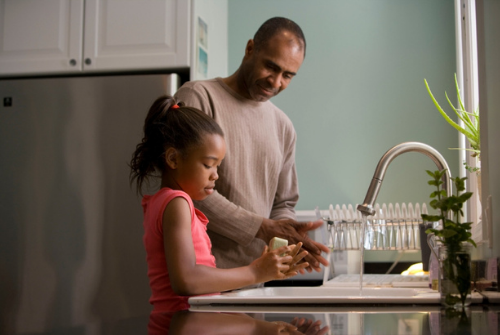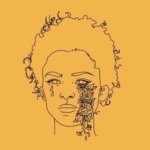
Divorce Effects on Children
When considering the consequences of divorce, effects on children are perhaps the most impactful and far-reaching. Children are the innocent victims—the bystanders who get swept into the aftermath of a decision they had no say in. And, while some children rebound on the merits of inherent resilience, others struggle greatly, even into adulthood.
Divorce is never easy. It comes at a high cost across the board—emotionally, financially, socially, physically. Spouses are so focused on what is driving their own discontent and how to assuage or escape it that children often become collateral damage. Everything, it seems, is about whether, when, and how to divorce. Effects on children are too often an afterthought, dealt with (if at all) after the divorce is all said and done.
The big question often explored more in hindsight than at the moment is whether staying together is better at all costs.
How Parental Conflict Harms Children
The unequivocal consensus among psychological experts is that the single most important factor that harms children of divorce is continual parental conflict. Children become damaged when parents fight in front of them, over them, and through them. It literally changes who they are and how they process the world.
The challenge in deciding whether to divorce comes when the homefront is so contentious that constant conflict is a given. In these cases, children do not fare better for having their parents stay together.
For example, a report by Pew Social Trends explains that, while children of divorce are more inclined to one day divorce, conflict is a huge influencer. It turns out that children have a better chance at marital success if their high-conflict parents divorced.
The point is, the immersion in constant conflict does the most damage.
But, even when choosing the better of two bad choices, there is no denying the divorce effects on children. And “high conflict” can follow and damage children even after the divorce.
It should come as no surprise that the first year or two after a divorce are the toughest on children. Imagine that your world is thrown off its axis. Imagine the constancy of even the simplest, most predictable components of your life being tossed into the darkness of chaos, change, and insecurity.
Now imagine having no say in how you navigate that darkness. You don’t know how you got here. You don’t know how to get out. And you don’t know how to recognize, let alone deal with, all you are feeling.
Young Children and the Effects of Divorce
Another “no surprise” is that children of different ages process divorce differently. And the far-reaching effects of divorce, such as high-risk behaviors, are influenced by a child’s age at the time of his/her parents’ divorce.
Young children, for example, may have difficulty processing the idea of having two homes and having to go between them. They may also wonder if their parents will stop loving them, just as their parents have stopped loving one another. They haven’t yet developed the cognitive ability to separate the two concepts.
In an effort to make sense of their world, grade school children may start looking for a place to lay blame. And too often that blame turns inward to themselves. Was this my fault? Are Mommy and Daddy mad at me for something I did?
Teenagers and the Effects of Divorce
Teenagers, on the other hand, have a lot more cognitive development under their belts. But they still have a lot of flux in their emotional development and expression. They are more inclined to feel stressed, angry, and resentful and to place blame on one or both parents.
The successful transition for children of any age really pivots on the behavior and choices of the parents.
Swearing there is a place in Hell for your Ex is akin to sending the same message to your children. They are, don’t forget, a blend of both of you. And, when you hate the other parent in any capacity, your children will subconsciously assume you hate the same in them.
And that unthinkable, albeit unintended, judgment upon a child is life-altering. It destroys their self-esteem and sets them up for mental health issues like depression, anxiety, and extreme emotional sensitivity.
It also lays the groundwork for loyalty conflict and cognitive dissonance. When parents fight in front of or through their kids, they impose an unspoken demand for the children to take sides. They may even divide the children in their loyalties, as if the children were material assets.
Some children are able to detach from the fighting and declare neutrality. But others internalize it. And the mental state of trying to hold two incompatible, contradictory thoughts at once becomes painful and unsustainable.
In an effort to alleviate the discomfort of cognitive dissonance, children will often “choose” one parent over the other. The parental alienation of the other parent has no justification. But the mind simply can’t survive that kind of mental conflict.
Far better to learn how to co-parent. If you absolutely hate your ex, you can still ensure that your children know you love that part of them that came from the other parent. And, by committing to conflict-free parenting post-divorce, you will give them the greatest chance of exercising their resilience.
Signs that Divorce and Conflict are Affecting Your Child
There are so many divorce effects on children, each worthy of and warranting its own spotlight. But here are some additional effects to keep in mind and look for as you navigate your own (potential) divorce:
- Increased behavioral problems, especially in homes and divorces with high conflict.
- Decreased interest in social activity. Children of divorce are more likely to feel insecure and alone in their experience and may therefore isolate.
- Difficulty adapting to change. Even the most amicable, cooperative divorces involve change for everyone. But most involve a lot of uncomfortable change—residential moves, financial hardship, school changes, remarriages, and step-/blended families, etc.
- Destructive and risky behavior like alcohol/drug use and sexual activity.
- Decreased academic performance. Constantly changing family dynamics understandably leave children confused and distracted, making it difficult for them to concentrate on studies.
- Increased health problems. Mental health issues include anxiety disorder, depressive disorder, anger issues, and feelings of overwhelming stress, pressure, and guilt. The internalization of symptoms can lead to somatic disorder, which may present as sleep problems, headaches, stomachaches, and tension. This somatic symptom disorder may become especially evident if parental conflict is high at the “switching hour” when children go from one parent to the other.
- Decreased faith in marriage and family, and therefore an increased risk of divorce later in life.
The responsibility of parenthood assumes a prioritization of the child over the parent. But, when high conflict, abuse, or addiction occurs in the home, everyone gets lost in the fight for emotional (and sometimes physical) survival.
Tragically, parents often return to emotional childhood themselves. And, if they don’t learn conflict-free parenting post-divorce, they will set up a history that is destined to repeat itself.
Whether you are navigating the experience of divorce or that confusing place of recreating the life you deserve, one thing we see making a significant difference for women is the conscious choice not to do it alone. Since 2012, smart women around the world have chosen SAS for Women to partner with them through the emotional, financial, and often complicated experience of divorce and reinvention. SAS offers six FREE months of email coaching, action plans, checklists, and support strategies for you and your future. Join our tribe now.
*This piece was written for SAS for Women, an all-women website. At SAS, we respect same-sex marriages; however, for the sake of simplicity, in this article we refer to your spouse as a male.







Leave a comment or thought.
We`d love to hear what you are thinking after reading this post.